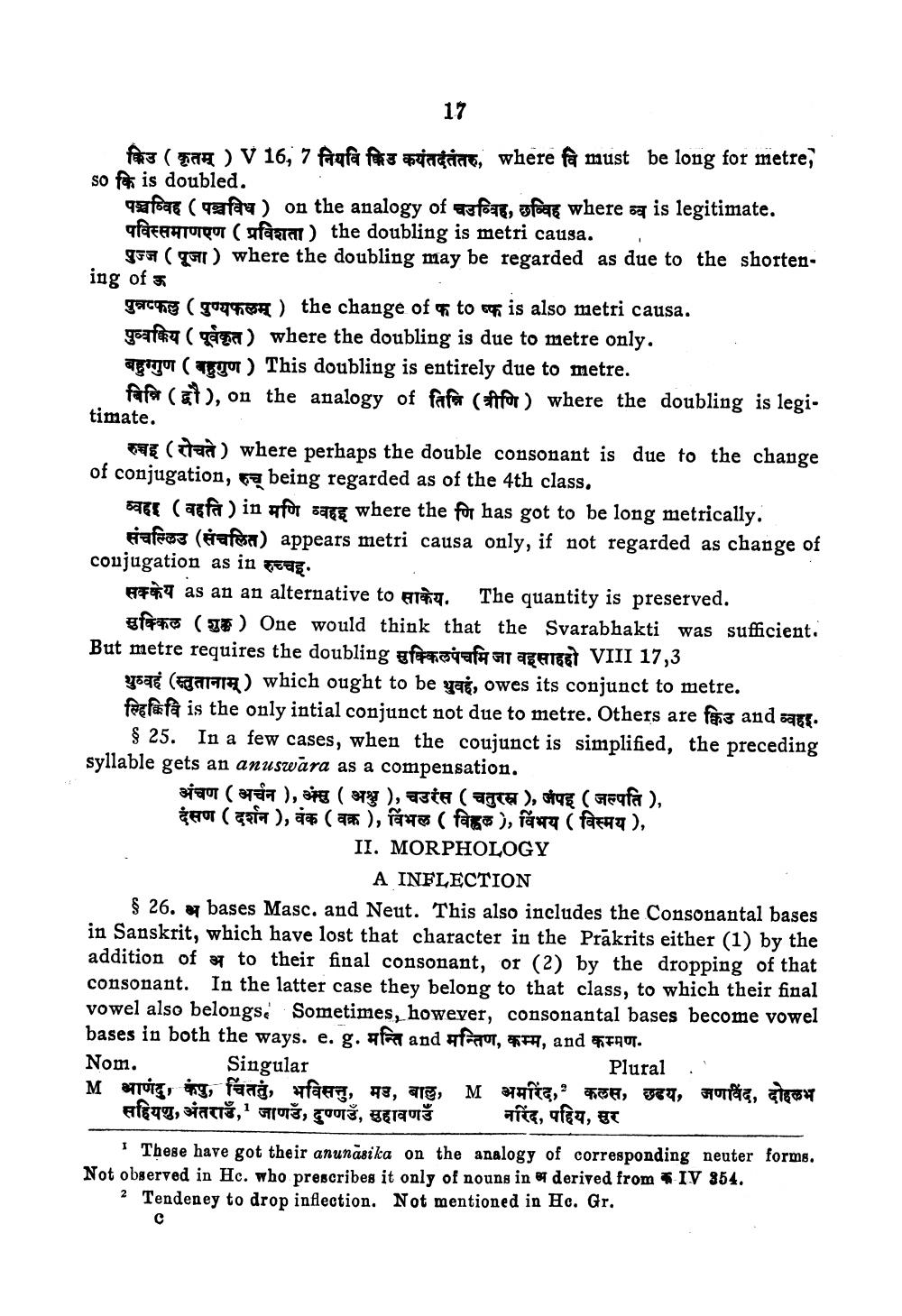________________
17
RJ ( 970 ) V 16, 7 fagfa festa gaine, where fà must be long for metre, so fef is doubled.
पञ्चविह (पञ्चविध) on the analogy of चउबिह, छव्धिह where व्व is legitimate. qarayTQUT ( gfaaal) the doubling is metri causa.
GFH ( TEI) where the doubling may be regarded as due to the shortening of 5
garche (gogne ) the change of * to copy is also metri causa. goafka ( cena) where the doubling is due to metre only. ayut ( taggor ) This doubling is entirely due to metre.
faler (at), on the analogy of fafor (itfor) where the doubling is legi. timate. ___रुचइ (रोचते) where perhaps the double consonant is due to the change of conjugation, being regarded as of the 4th class.
Sagt (agfa) in afor sauce where the for has got to be long metrically.
aftos (Hafesa) appears metri causa only, if not regarded as change of conjugation as in रुच्चह.
सक्केय as an an alternative toसाकेय. The quantity is preserved.
fic (#) One would think that the Svarabhakti was sufficient. But metre requires the doubling æfaqafH AT EHTEET VIII 17,3
yang (at ) which ought to be yas, owes its conjunct to metre. fazlafa is the only intial conjunct not due to metre. Others are feris and aur.
§ 25. In a few cases, when the coujunct is simplified, the preceding syllable gets an anuswara as a compensation.
19 ( raia ), E ( 978 ), TSÍA ( at ), ( fa), HOT ( Esta), (a ), f ( fag® ), faye ( farnu),
II. MORPHOLOGY
A INFLECTION $ 26. e bases Masc. and Neut. This also includes the Consonantal bases in Sanskrit, which have lost that character in the Prakrits either (1) by the addition of 37 to their final consonant, or (2) by the dropping of that consonant. In the latter case they belong to that class, to which their final vowel also belongs. Sometimes, however, consonantal bases become vowel bases in both the ways. e. g. मन्ति and मन्तिण, कम्म, and कम्मण. Nom. singular
Plural M भाणंदु, कंपु, चिंततुं, भविसनु, मउ, बाल, M अमरिंद, कलस, छडय, अणविंद, दोहलभ
FICT, aiatie, Š, Toš, Taurš afta, fty, TT
These have got their anunāsika on the analogy of corresponding neuter forms. Not observed in Hc. who prescribes it only of nouns in e derived from * IV 854.
2 Tendeney to drop inflection. Not mentioned in Ho. Gr.




